It’s a hectic start of the week – you have to get ready for work, get your children ready for daycare, and you can’t find your puppy anywhere.
Well, there he is, chewing on walls – again!
You loudly say ‘no’, but he moves away from the wall only to start again when you turn your back to him.
There’s nothing you can do, so you pray he’ll leave the supporting walls alone. At least you’ll have a home when you get back.
Is it true there is nothing you can do? No, it is not!
There is a simple solution, and it takes 3 steps to teach your puppy not to chew on walls (or anything else).
You don’t have to be a professional trainer, and you don’t need some fancy equipment. You need patience, consistency, and some dog treats.
How To Stop A Puppy From Chewing On Walls
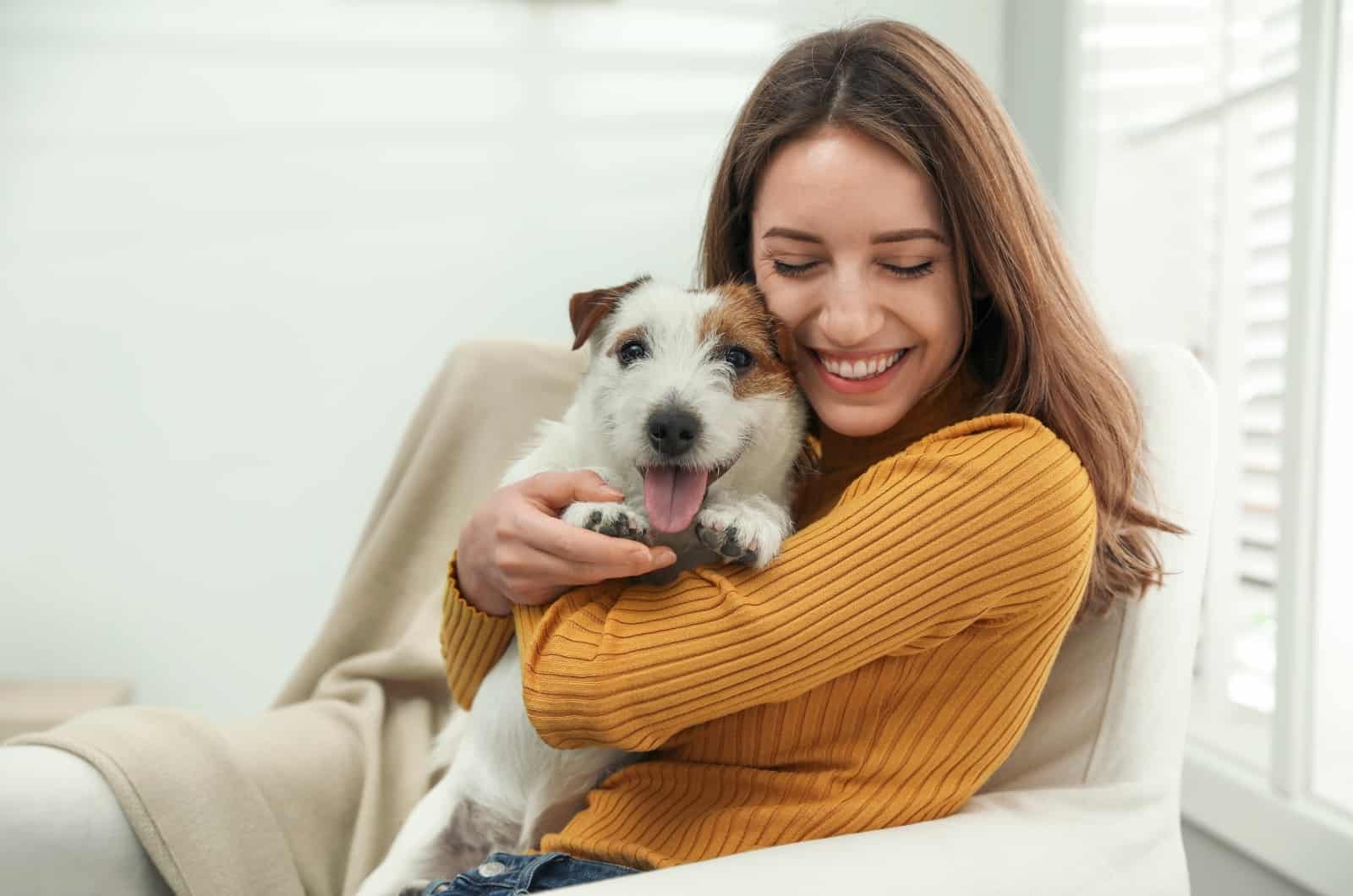
When you get a new dog, no one tells you about the puppy blues and all the chaos that will happen until you both get used to each other.
It doesn’t have to be this way. Yes, your life will change, but that’s what’s so great about it. You have a new furry family member, and he will love you for the rest of his doggy life.
Now, there are some things you need to do. The first thing is making a proper puppy schedule. It will make things much easier, not only while your dog is still a puppy, but when he grows up.
Also, it is normal for dogs to chew. That is their instinct and physiological need.
So, you can’t stop them, but you can redirect them and teach them what they should chew on.
Not the walls… that’s for sure.
Here are 3 simple steps to teach your puppy not to chew on walls.
1. Don’t Ignore Good Things
If you want to stop your puppy from chewing on walls, you have to use positive reinforcement when you see your puppy chewing something he should chew!
Most dog owners ignore when something good happens. They use this as a moment of peace, and they continue doing what they had to do in the first place.
I know we all lead busy lives, but when you see your puppy chewing on something you want him to chew on, such as a toy or a bone treat, show him that you are happy about it.
You can pet him, say a warm and firm ‘good boy’ or ‘good girl’, and do it every time they do something good.
Don’t ignore good things. That is the first step. Always use positive words when you see your puppy chewing on something they should chew on. You can also use a dog treat as a reward. That’s even better because it further motivates the puppy to do good things.
2. Redirected Focus
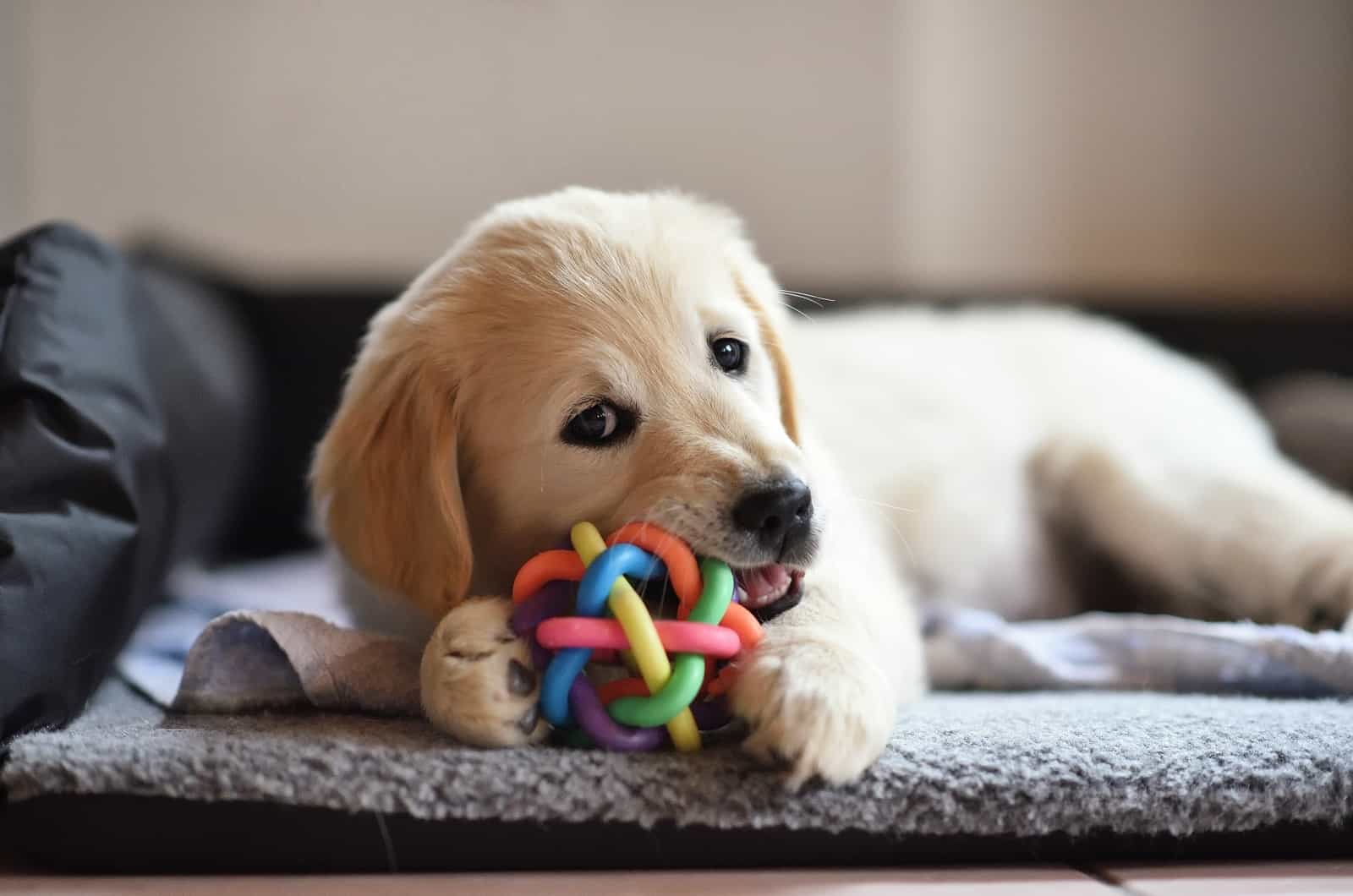
An equally-important step is redirected focus. You want to stop your puppy from chewing on walls, and give him something else to chew on. You choose what new thing he should chew on, but I recommend a toy you can fill with food. It’s tasty and interesting to dogs, and it will keep your dog occupied longer than a simple chewing squeaky toy.
You can even choose a treat according to your dog’s breed. If you have a Corgi, there are Corgi treats they love, as well as Cavapoo treats, Rottweiler treats, etc.
How to do it:
- Come to your puppy and firmly say ‘stop’
- Put a chewing toy near them so that they have to move away from the wall to get to the treat
- When they start chewing on the treat, say ‘good boy’!
This is called the redirected focus. This step is very important in other behavioral dog training as well, especially if we are dealing with natural behaviors for dogs, such as chewing.
3. Be A Leader
The third step seems unnecessary to mention, but it is crucial if you want to teach your puppy or adult dog anything. You need to show who is the alpha in your home.
Your dog has to know you are the leader, and to be a good leader, you have to be:
- Calm
- Confident
- Determined
You have to show that you know what you are doing in order to teach your dog what to do. If you give your puppy a treat, and another time, you ignore his behavior or yell, then on some days, you completely forget everything and use accidental positive reinforcement when the puppy chews on walls – there will be no progress no matter how smart your puppy is.
They need consistency and confidence without hesitation.
These Things Are Important, Too
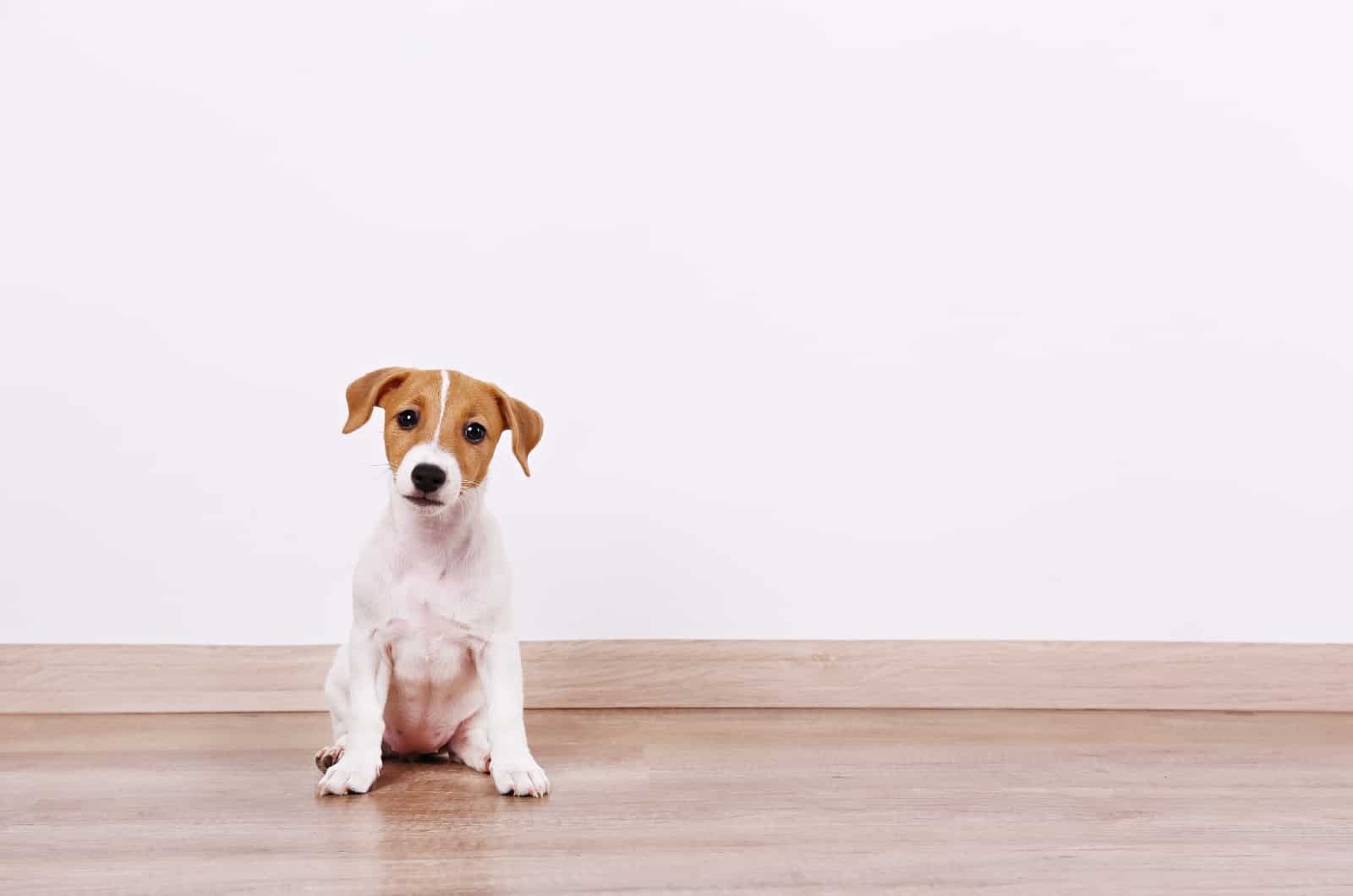
After talking to a lot of dog owners and dog trainers, one thing became obvious: crate training and exercise help a lot. They are the key to correcting many behavioral issues in young and adult dogs, but especially in young dogs when their developing brain is easier to shape.
1. Exercise
All dogs need a certain amount of exercise every day to keep them healthy and happy. You can’t just take them out to pee – they have to have their playtime, too.
Depending on your habits and schedule, you can choose a low-energy dog, a medium-energy dog, or a high-energy dog.
But, no matter the breed, they will need exercise. If they don’t have enough things to do during the day to get rid of their energy, your dog will become destructive, anxious, or depressed.
So, try it out. Take your puppy for a long walk, run with him in the park, or play with him for an hour at least and see what happens.
They will have less energy to chew on anything.
If you are not at home for the majority of the day, you can leave some interactive dog toys for your puppy to play with.
2. Crate Training
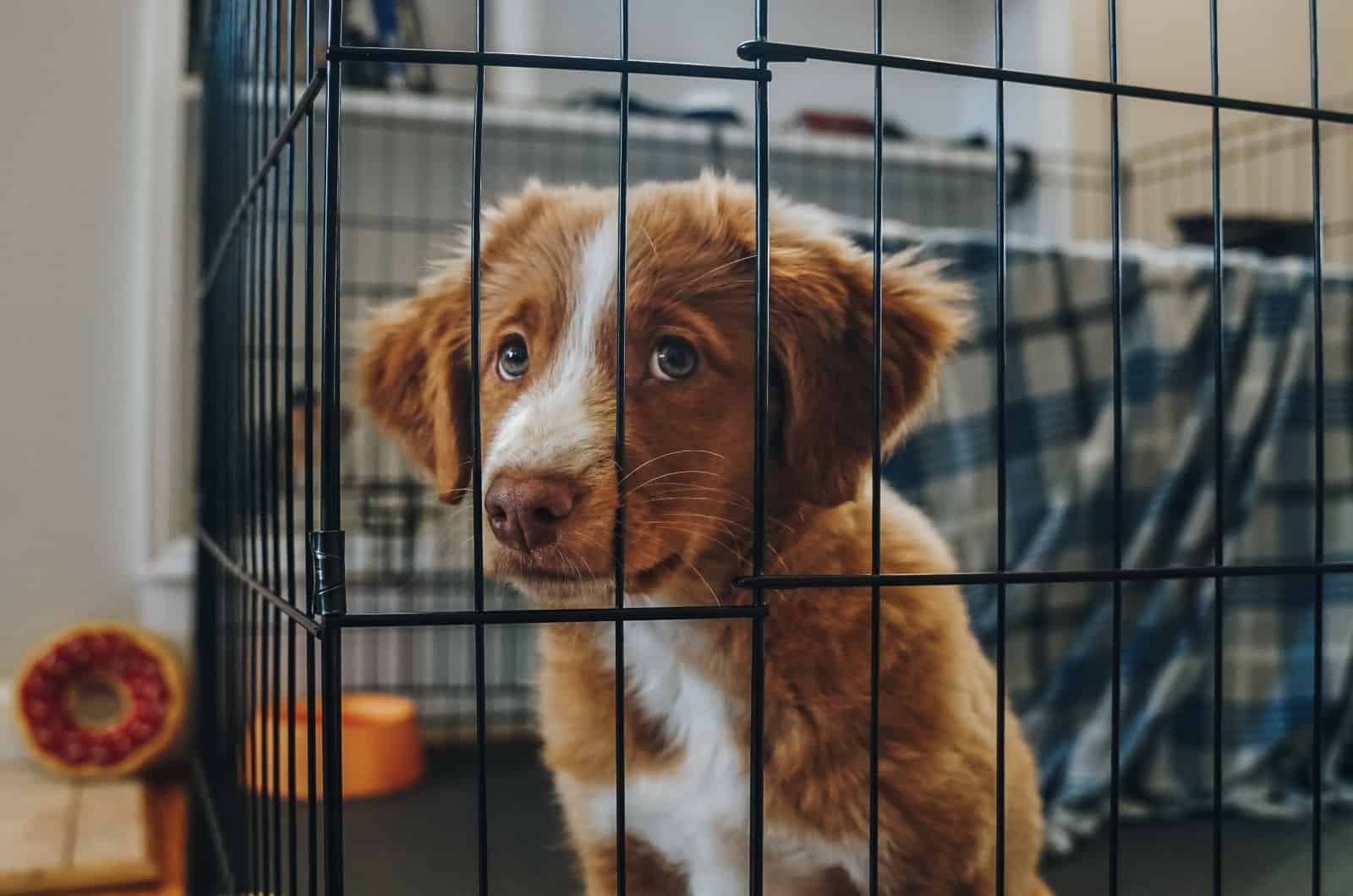
If you do this right, the crate will become a valuable tool in training your puppy, and it will be a safe spot – somewhere your puppy will feel secure and will have no problem being inside it.
How does this help?
For those stubborn puppies and dogs, when you don’t have time that day to keep an eye on your puppy and redirect its focus, you can put your puppy in a crate with a chewing toy you wish it would chew on all the time.
Don’t leave your puppy in the crate for too long or all day long. This is something we shouldn’t even mention if we are considering ourselves to be good dog owners.
If you leave your puppy for too long in the crate, it can have the opposite effect. You’ll soon realize your puppy doesn’t like the crate, and he’ll either start crying in it or show other signs he hates the crate.
The Conclusion
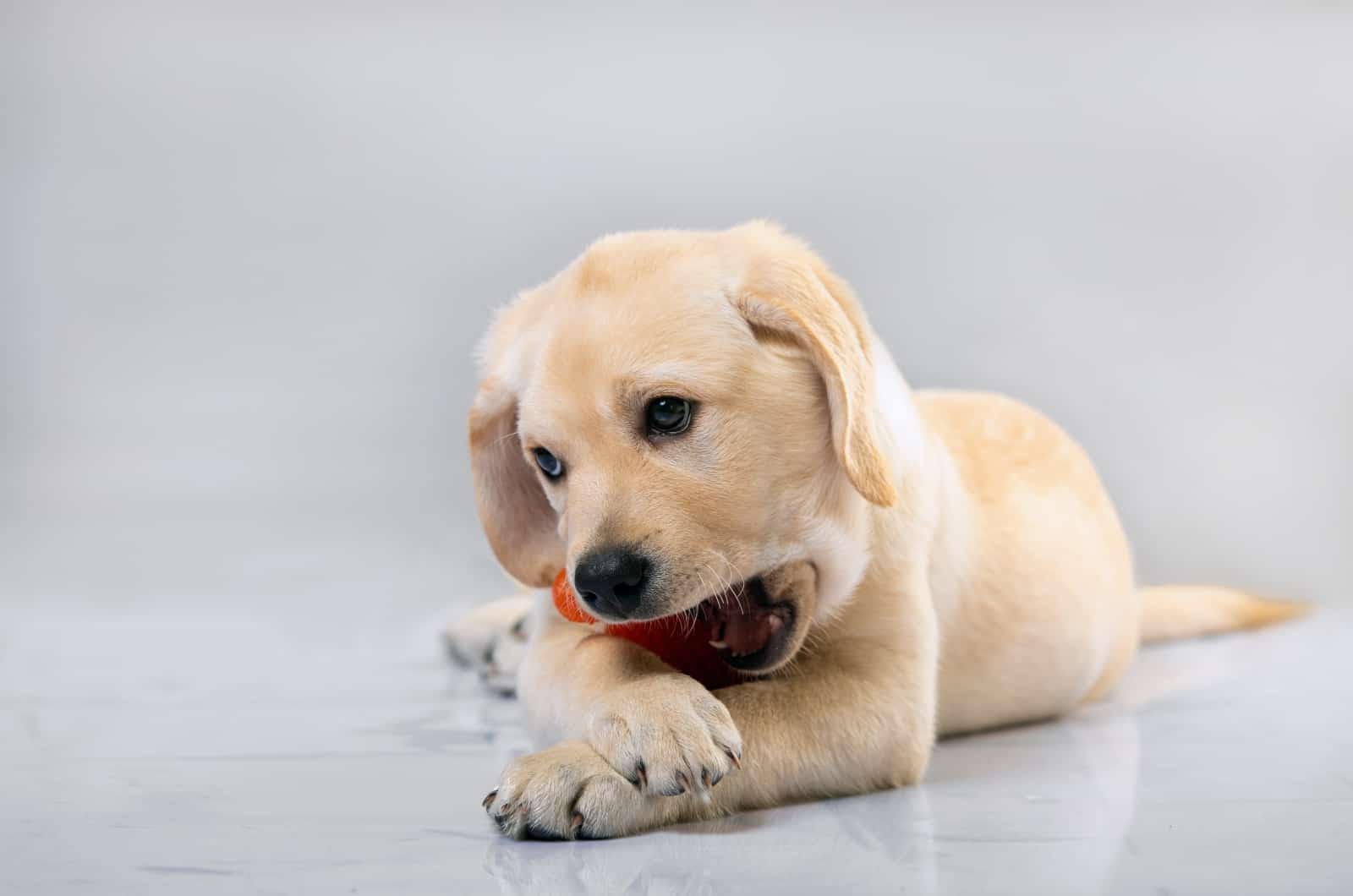
Teaching your puppy not to chew on walls takes time and patience. However, it is quite simple when you separate it into the three basic steps you need to follow.
These steps consist of positive reinforcement, redirected focus, and being a consistent and confident leader.
Having your puppy crate trained and giving him lots of exercise help as well. It will make your dog more confident, relaxed, and too tired to chew on walls. The goal is not to kill the chewing instinct in a dog, but to make it chew less, and chew things it should chew on.
A happy, healthy dog that has an appropriate amount of daily exercise will be a good boy, and won’t cause lots of problems.
Of course, they can still be mischievous from time to time, but that’s what owning a puppy means. That’s one of the reasons why we love them.















